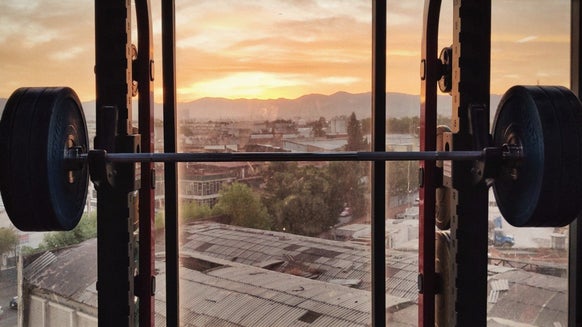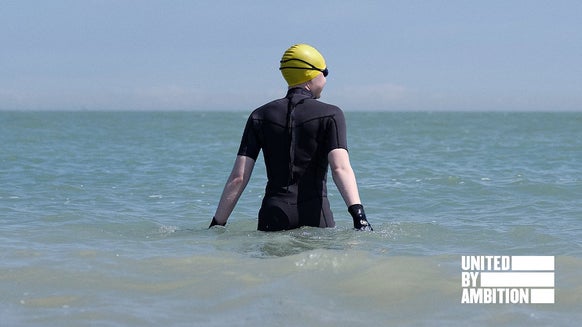How to Build Muscle and Improve Strength in Lockdown

When gyms are forced to close due to lockdown restrictions, many people despair, thinking that all their hard-earned progress built in the gym will be lost. While it can be difficult to progress certain aspects of your training without the equipment available in the gym, increasing strength in other areas can help you to maintain previous strength and even build on what you already have!
Luckily, we’ve got some advice to help you remain motivated, active and improving your fitness throughout lockdown!
How do you build muscle and increase strength?
Building muscle requires three basic elements; resistance training, sufficient nutrition and adequate sleep.
Training
Resistance training should comprise of a structured programme (e.g. push-pull-legs, 2x per week split) that utilises progressive overload. This means that over time, your training gets more difficult via a multitude of variables such as increasing sets, reps, training frequency and intensity of training. For instance, performing one extra rep than you did on your last session would be progressive overload, as you have increased the amount of stimulus to the muscle (i.e. 1 set of 10 squats at 100kg = 1000kg volume load, increased to 11 reps the next session would make 1100kg volume load).
Nutrition
Nutrition is more personalised, as it relies on you knowing what foods you can/can’t eat and what you like/don’t like. That said, to build muscle and strength, you must be in at least a small caloric surplus (meaning you must eat enough food each day that ensures you consistently gain body mass).
Sleep
Sleep is often undervalued by many, but it contributes hugely to your recovery from exercise and determines your preparedness for your next session. Quality over quantity is best here, so make sure you pay attention to sleep hygiene to ensure you feel well-rested. This consists of things like making sure the environment is clean, quiet and dark, your stress is minimised, staying away from screens for the hours before bed and having a scheduled time to go to bed.
How can you build muscle without a gym?
Building muscle does not need to be done in the gym. Key elements include progressive overload via resistance training and appropriate recovery strategies. As long as you continue to adhere to these principles, then you’re on the right track to keep increasing your strength and muscle mass.
Use your bodyweight
Otherwise known as callisthenics, bodyweight exercise is the simplest form of resistance training – using only your body as resistance. To elicit a similar response to training with external load, you will need to adapt these methods by modifying the tempo (thus increasing mechanical time under tension), increasing the sets and reps, and decreasing the rest periods between sets.
You can also modify the set up of the exercise to make leverages work against you to increase the resistance (i.e. feet elevated push-ups shift more of your bodyweight/load onto your arms, thus increasing the resistance of the exercise).
Basic bodyweight exercises to include are; push-ups, pull-ups, bodyweight rows, squats, lunges and variants of each of them.
Use free-weights
Hand-held weights such as the dumbbell or kettlebell can be used in place of gym equipment for exercise routines. They can be considered more beneficial for training than machines, as your body uses stabiliser muscles (synergists), which don’t contribute as much to exercises with machines. You can perform lots of different kinds of training with free-weights, so be sure to research what to do based on your goals (hypertrophy, muscular endurance, power increase etc.).
Grab the resistance bands
Using resistance bands offers a cheap and space-saving alternative to free weights. Resistance bands offer more resistance towards the end of your range of movement – when the band is at a greater stretch. This means that the amount of load experienced when using a resistance band is not as linear as when using free weights, but they still offer an effective way to include resistance training when access to equipment is limited.
Classic exercises like the squat, bench and deadlift can be adapted for the resistance band, but you can also easily set up for isolation exercises like hamstring/bicep curls or tricep/leg extensions.
Gradually increase how much weight you’re lifting
Otherwise known as progressive overload, this is a vital element of resistance training. This can be done with bodyweight training by altering leverages (i.e. more reps in a more difficult position), by adding more weight if you have access to dumbbells, or by increasing the number of sets and reps that you perform (thus increasing the total amount of volume – i.e. 1 set of 8 with a 10kg dumbbell = 80kg volume load, 1 set of 10 with the same dumbbell = 100kg volume load, and thus more training stimulus).
Get your nutrition right
Consistency is key, so make sure you are fuelling your body properly. This will mean that you are also more consistent between training sessions, so you will have a better idea of your strengths and weaknesses (i.e. training on an empty stomach one day vs. being well-fed for another session can have a drastic impact on your performance). Don’t worry about the odd cheat meal or day, as this is unlikely to throw you off track if you are consistent with your nutrition for the majority of the time.
Calculate your macros
Your nutrition is made up of macronutrients and micronutrients. Macronutrients include carbohydrates (your body’s go-to source of energy), fats (used for longer-term energy stores, hormonal functions and overall health) and protein (which, when consumed, is broken down into amino acids that your body uses to build and maintain muscle mass). Alcohol is also a macronutrient, but of course, it is not essential for your wellbeing and can have detrimental effects on your training, recovery and sleep.
The number of carbs and fats that you consume can be adjusted to your preference/nutritional/performance requirements, but protein should generally be kept quite high for individuals who partake in resistance training. Generally, upwards of 1.6g to as high as 2.2g of protein per kg of body mass will be sufficient to stimulate muscle protein synthesis (the process responsible for repair and growth post-exercise). Your protein intake should be spread throughout the day, in chunks of 20-40g.
Set aside time to train
Following a structures training plan will help to keep you motivated and ensure you are taking the necessary steps to reach your goals. For most people, 4-6 training sessions per week is more than enough, so make sure that you account for how effective your recovery is and other life commitments before you jump into doing 2 sessions every day of the week!
Take Home Message
Achieving the results and training adaptations that you want is a long process that requires you to be consistent more than anything. The advice in this article will put you on the right track to make sure that you reach those training goals (and try to avoid paralysis through analysis! Getting something done is always better than doing nothing at all, even if it’s slightly off track or you just fancy a bit of a change in your training!).








